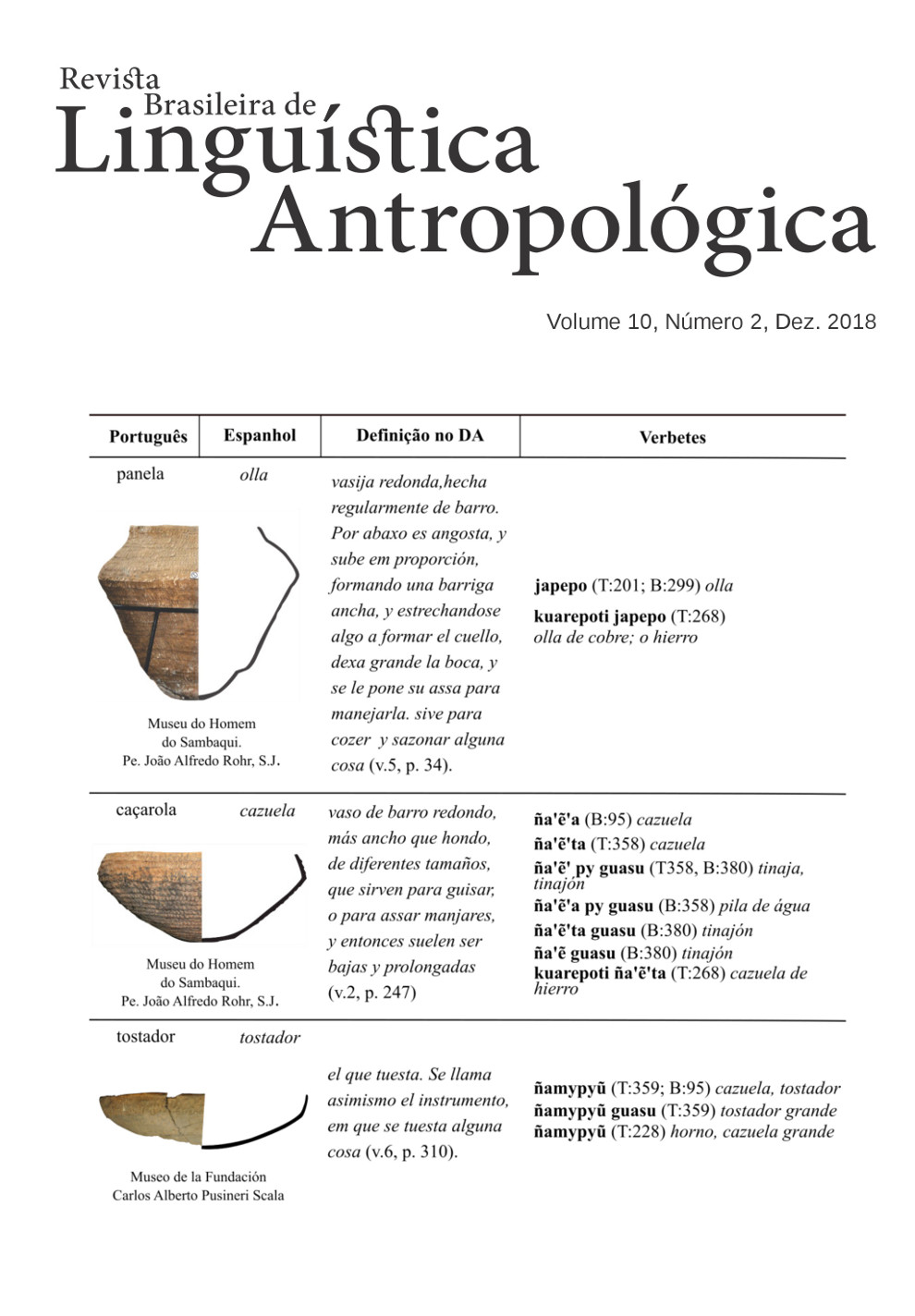Increase and Decrease Processes of Verbal Valency in Oro Wari’ (Wari’/Pacaa Nova, Txapakura)
DOI:
https://doi.org/10.26512/rbla.v10i2.20936Keywords:
Keywords: Oro Wari’. Txapakura. Argument Structure. Valence PatternAbstract
In this paper, we aim to offer a brief description and analysis of the valence-changing operations observed in the Oro Wari’ Language (Pacaa Nova, Txapakura family). We will show two valence-increasing categories: the causative and the applicative. In the descriptive terms, the particle {ara?} conveys the meaning of causation and adds a new agent argument (the causer) to the valence pattern. The language also has the following applicative particles: {win}, {miÊ”}, {het}, {ka} and {pe}, which introduce an argument in the verbal structure with the semantic functions of comitative, benefactive, source, direction/goal and locative. We will investigate three valence-decreasing categories: the reflexive {ʃiye-}, the reciprocal {kaɾakan} and the intransitivizer {maw}. In reflexive and reciprocal verbs, a syntactic structure is used to indicate that someone or something is performing an action on or for itself, but since subject and object arguments are referentially identical, only one participant is expressed. Finally, the particle {maw}, which derives stative-resultative structure, is the valence-changing category which removes the agent argument from the subject position, and the patient argument must take up the subject position instead.
References
Apontes, Selmo Azevedo, e Quesler Fagundes Camargos. 2013. “Processo de Causativização em Oro Waram e suas consequências para a codificação dos argumentos nucleares.” Artigo apresentado no IV Congresso Internacional de Estudos Linguísticos e Literários na Amazônia, Belém, PA, 23-26 de abril de 2013.
Apontes, Selmo Azevedo. 2015. Descrição gramatical do Oro Waram (Wari’/Pacaa Nova, Txapakura): fonologia, morfologia e sintaxe. Tese de Doutorado. Belo Horizonte: UFMG.
Bobaljik, J. D., 1993. On Ergativity and Ergative Unergatives. MIT Working papers in Linguistics 19, pp. 45-88.
Burzio, L. Italian Syntax. 1986. A government-biding approach. Dordrecht: Reidel Publish Company.
Comrie, Bernard. 1989. Language Universals and Linguistic Typology: Syntax and Morphology. 2ed. Chicago: Chicago University Press.
Crystal, David. 1997. A dictionary of linguistics and phonetics. 4ed. Cambridge: Blackwell.
Crystal, David. 2000. Dicionário de Linguística e de Fonética. Rio de Janeiro: Zahar.
Everett, Daniel, e Bárbara Kern. 1997. Wari’: the Pacaas Novos Language of Westerns Brazil. London, New York: Routlededge.
Givón, Talmy. 2001. Syntax: an introduction. Amsterdam/Philadelphia: Benjamins.
Oro Waram Xiyein, Marcelina, Quesler Fagundes Camargos, e Selmo Azevedo Apontes. 2017. “As estruturas Aplicativas em Oro Waram Xiyein (família Txapakura)”. Artigo apresentado no IV Encuentro de Lenguas Indigenas Americanas (ELIA), Santa Rosa, Pampa, Argentina, 20-22 de setembro de 2017.
Payne, T. E. 1997. Describing Morphosyntax. Cambridge: Cambridge University Press.
Payne, T. E. 2006. Exploring Language Structure. Cambridge: Cambridge University Press.
Perlmutter, D. 1978. “Impersonal Passives and the Unaccusative Hypothesis.” In Proceedings of the 4th Annual Meeting of the Berkley Linguistics Society. Berkeley: UC Berkeley.
Pylkkänen, Liina. 2002. Introducing Arguments. Tese de Doutorado. Cambridge: MIT.
Pylkkänen, Liina. 2008. Introducing Arguments. Cambridge: MIT Press.
Sapir, Edward. 1921. Language: an introduction to the study of speech. New York: Hardcourt, Brace.
Whaley, Lindsay J. 1997. Introduction to Typology: The unity and diversity of Language. SAGE Publications.
Downloads
Published
Issue
Section
License
Authors who publish in RBLA agree to the following terms:
a) Authors maintain the copyright and grant the journal the right of first publication, and the work is simultaneously licensed under the Creative Commons Attribution License, which allows the sharing of the work with recognition of the authorship of the work and initial publication in this journal.
b) Authors are authorized to assume additional contracts separately, for non-exclusive distribution of the version of the work published in this journal (eg, publish in an institutional repository or as a book chapter), with recognition of authorship and initial publication in this journal.
c) Authors are allowed and encouraged to publish their work online (eg, in institutional repositories or on their personal page) at any point before or during the editorial process, as this can generate productive changes, as well as increase impact and citation of the published work.










